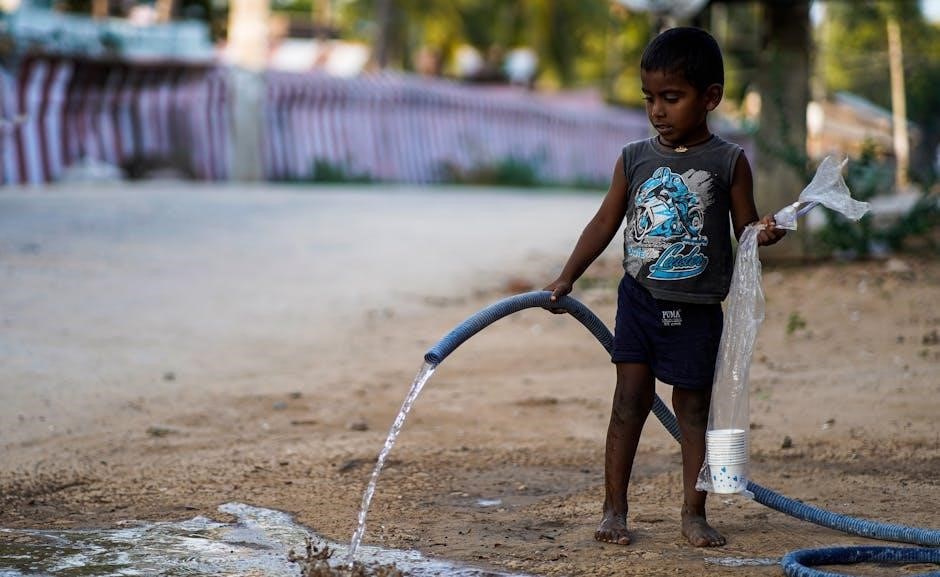
Kidde carbon monoxide alarm user guide provides essential information for safe installation and operation of devices in residential environments with specific guidelines and warnings for users always.
Importance of Carbon Monoxide Alarms
Carbon monoxide alarms are crucial for home safety as they detect odorless and colorless carbon monoxide gas that can be deadly.
The importance of installing carbon monoxide alarms in homes cannot be overstated‚ as they provide an early warning system for potential carbon monoxide poisoning.
According to various sources‚ carbon monoxide poisoning is a leading cause of accidental poisoning deaths‚ making carbon monoxide alarms a necessary device in every home.
The Kidde carbon monoxide alarm user guide emphasizes the importance of proper installation‚ maintenance‚ and testing of carbon monoxide alarms to ensure they function correctly.
By installing carbon monoxide alarms‚ homeowners can protect themselves and their families from the risks associated with carbon monoxide poisoning.
Overall‚ carbon monoxide alarms play a vital role in preventing accidents and saving lives‚ making them an essential component of home safety systems.

Understanding Carbon Monoxide Alarm Sounds
Carbon monoxide alarms produce distinct sounds to alert users of potential dangers always using specific patterns and frequencies.
Alarm Pattern and LED Indicators
The alarm pattern is four quick beeps repeating every 5 seconds‚ with the red LED blinking in sync with the beep pattern‚ providing a clear visual indication of the alarm activation.
The digital display on certain models will show the PPM level of CO detected‚ allowing users to assess the severity of the situation.
The alarm pattern and LED indicators are designed to grab the user’s attention and prompt immediate action to ensure safety.
The specific pattern and LED indicators may vary depending on the model‚ but they all serve the same purpose of alerting users to potential carbon monoxide dangers.
It is essential to familiarize oneself with the alarm pattern and LED indicators to respond quickly and effectively in case of an emergency.
The alarm’s audible and visual signals are critical components of the Kidde carbon monoxide alarm user guide‚ providing users with the information they need to stay safe.

What to Do When the Alarm Sounds
Immediate action is required when the alarm sounds to ensure safety and prevent carbon monoxide poisoning always follow guidelines.
Immediate Action Required
When the Kidde carbon monoxide alarm sounds‚ immediate action is required to ensure the safety of all individuals in the home. The alarm indicates the presence of carbon monoxide‚ which can be deadly if not addressed promptly. It is essential to follow the recommended steps to minimize exposure and prevent harm. The first step is to operate the Test/Reset button‚ followed by calling emergency services‚ such as the fire department or 911. Next‚ all individuals should immediately move to fresh air‚ either outdoors or by an open door or window. A head count should be taken to account for all persons‚ and children should be taught how to respond to the alarm and never play with the unit. By taking these immediate actions‚ the risk of carbon monoxide poisoning can be reduced‚ and safety can be ensured.

Carbon Monoxide Alarm Procedure
Follow the step-by-step guide for responding to the alarm activation with caution always.
Step-by-Step Guide to Responding to the Alarm
To respond to the alarm‚ operate the Test/Reset button‚ then call emergency services and move to fresh air immediately;
The step-by-step guide includes operating the Test/Reset button‚ calling emergency services‚ and moving to fresh air.
This guide is crucial in ensuring safety and preventing harm from carbon monoxide poisoning.
The alarm is designed to detect carbon monoxide from any source of combustion in a residential environment.
It is essential to follow the guide carefully and take immediate action when the alarm sounds.
The guide provides a clear and concise procedure for responding to the alarm‚ including calling emergency services and moving to fresh air.
By following the guide‚ users can ensure their safety and the safety of those around them.
The step-by-step guide is an essential part of the Kidde carbon monoxide alarm user guide.

Kidde Carbon Monoxide Alarm Models
Kidde offers various models including K5DCO and K7DCO with unique features always.
Features of Model K5DCO and K7DCO
The Kidde carbon monoxide alarm models K5DCO and K7DCO have distinct features that set them apart from other models. The K5DCO model has a digital display that shows the parts per million (PPM) level of carbon monoxide detected. The K7DCO model also has a digital display and can detect carbon monoxide levels as low as 10 PPM. Both models have a test/reset button that allows users to check the alarm’s functionality and reset it after a false alarm. They also have a peak level memory feature that recalls the highest level of carbon monoxide detected. These features make the K5DCO and K7DCO models reliable and efficient carbon monoxide alarms for residential use. They are designed to provide accurate and timely warnings of potential carbon monoxide threats‚ giving users time to take action and ensure their safety.
Troubleshooting and Maintenance
Regularly check and maintain Kidde carbon monoxide alarms to ensure proper function and safety always with specific guidelines.
Regular Testing and Resetting of the Alarm
To ensure the Kidde carbon monoxide alarm is functioning correctly‚ regular testing is necessary. The test button should be pressed monthly to verify the alarm is working properly. After testing‚ the alarm will automatically reset. It is also important to reset the alarm after a CO detection‚ once the area has been ventilated and the CO levels have returned to normal. The reset button should be pressed to silence the alarm and reset the device. This process helps to ensure the alarm is always ready to detect CO and provide warning in case of an emergency. Regular testing and resetting of the alarm is crucial for maintaining a safe and reliable device. By following these simple steps‚ users can help to ensure their Kidde carbon monoxide alarm continues to function effectively. The alarm will provide a warning if it needs to be replaced.
Additional Safety Precautions
Install alarms near sleeping areas and follow manufacturer instructions for safe installation always using correct methods.
Teaching Children to Respond to the Alarm
It is essential to teach children how to respond to the carbon monoxide alarm‚ ensuring they understand the importance of the alarm and the necessary actions to take.
The alarm is designed to detect carbon monoxide from any source of combustion in a residential environment‚ and children should be instructed to never play with the unit.
Parents should educate their children on what to do when the alarm sounds‚ including moving to fresh air and calling emergency services if necessary.
By teaching children how to respond to the alarm‚ parents can help ensure their safety and well-being in the event of a carbon monoxide emergency.
This education can be done through regular drills and discussions‚ helping children to understand the alarm’s purpose and their role in responding to it.
Regular conversations and drills can help children feel more comfortable and confident in their ability to respond to the alarm.

